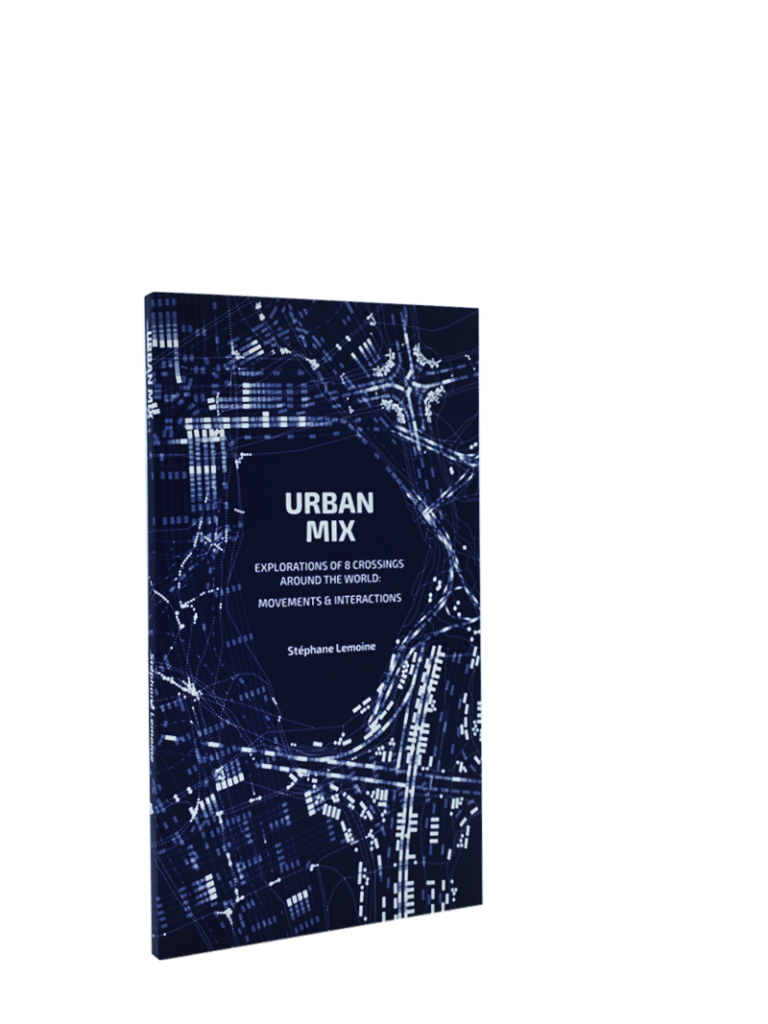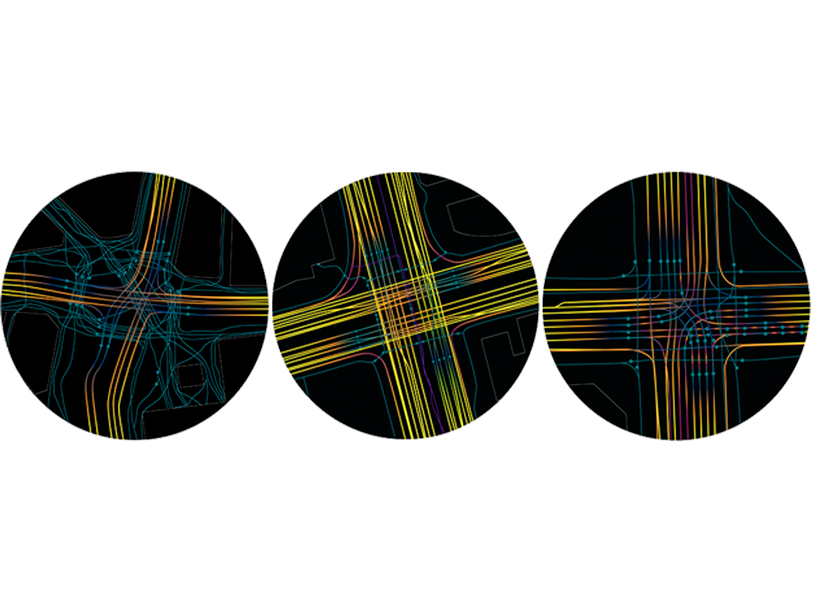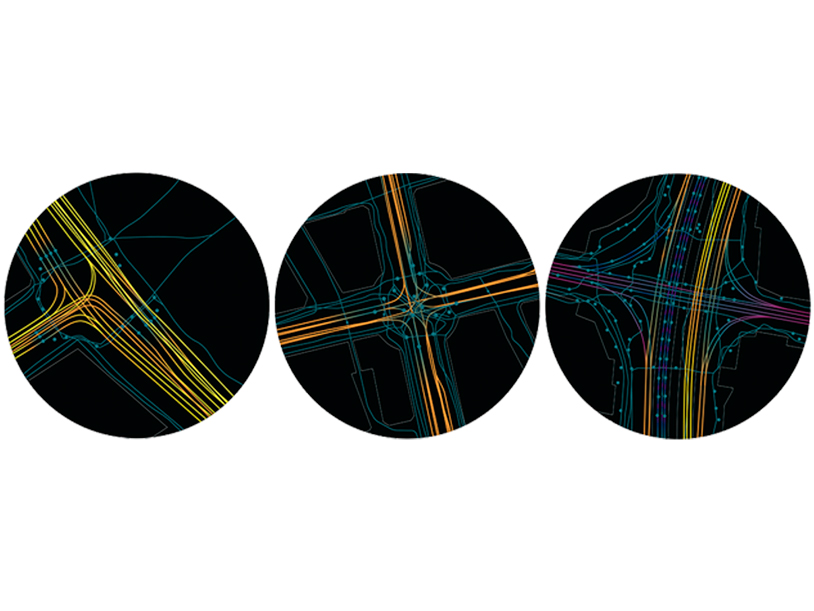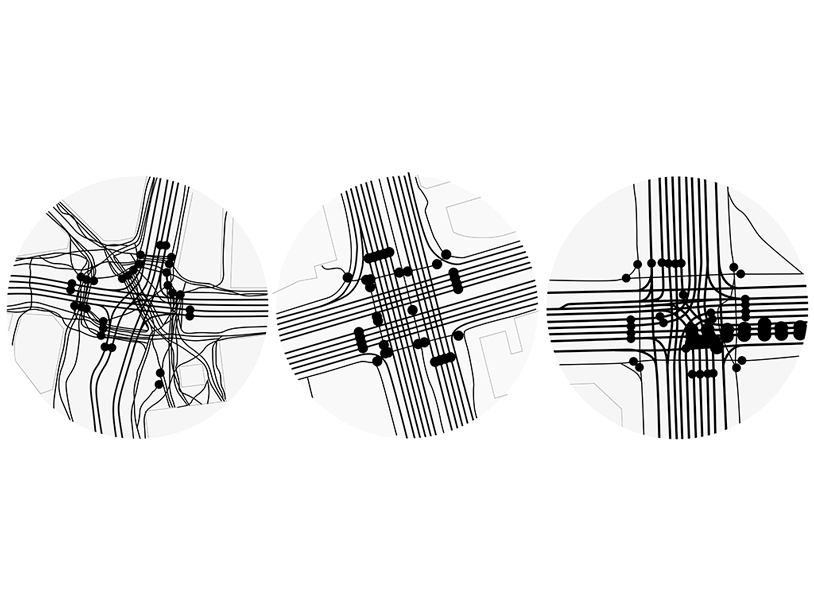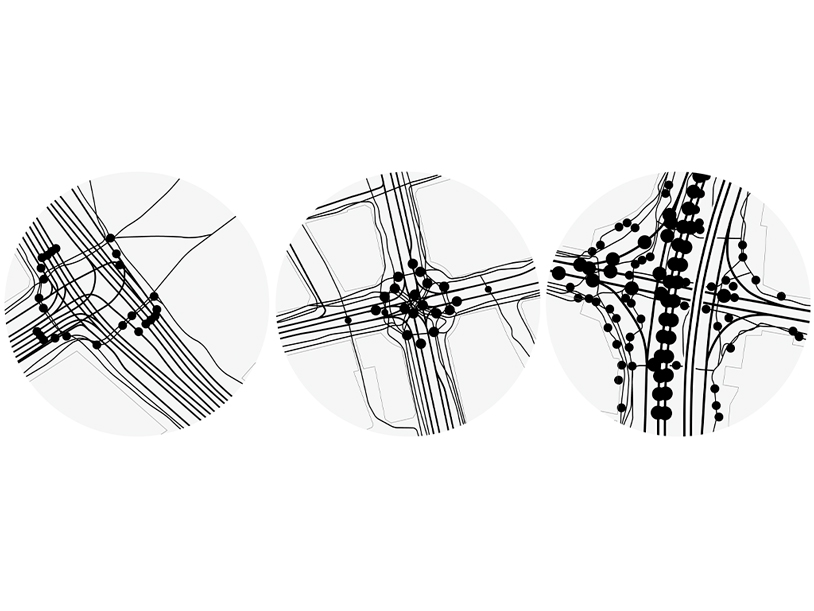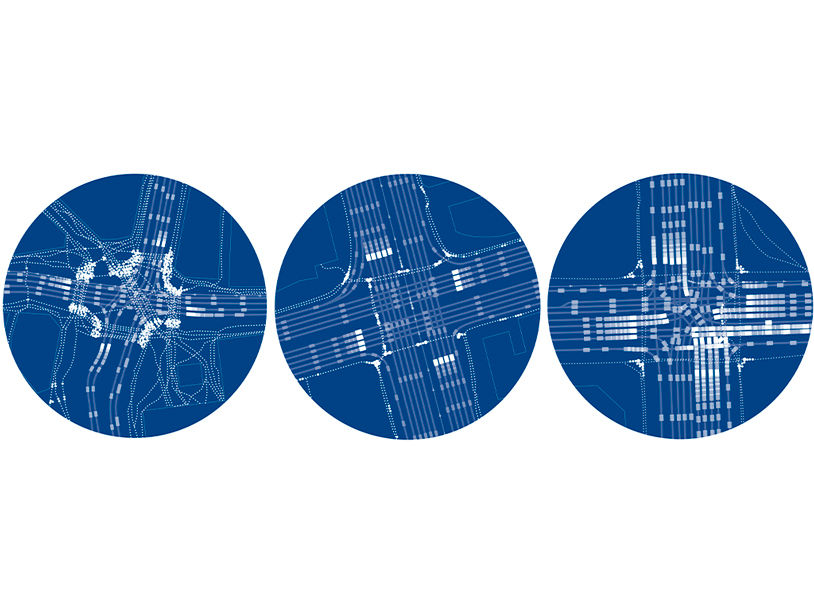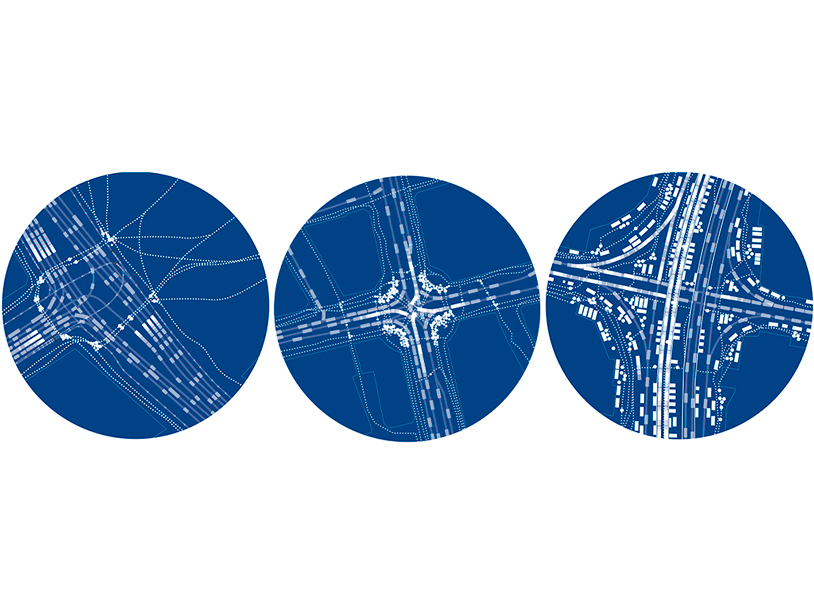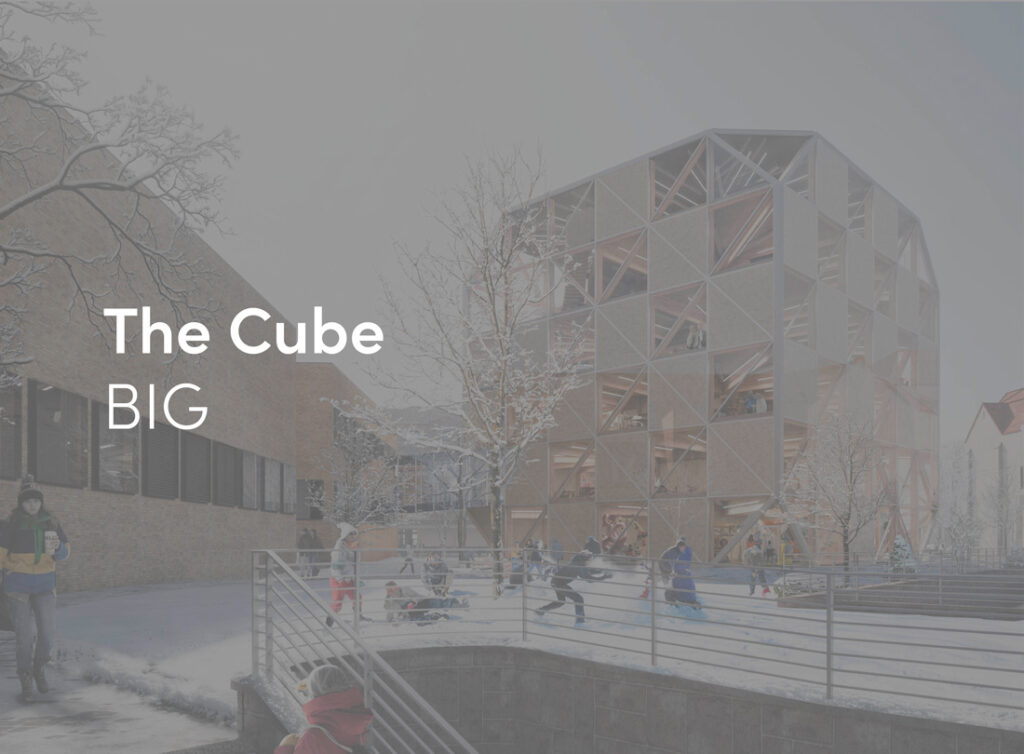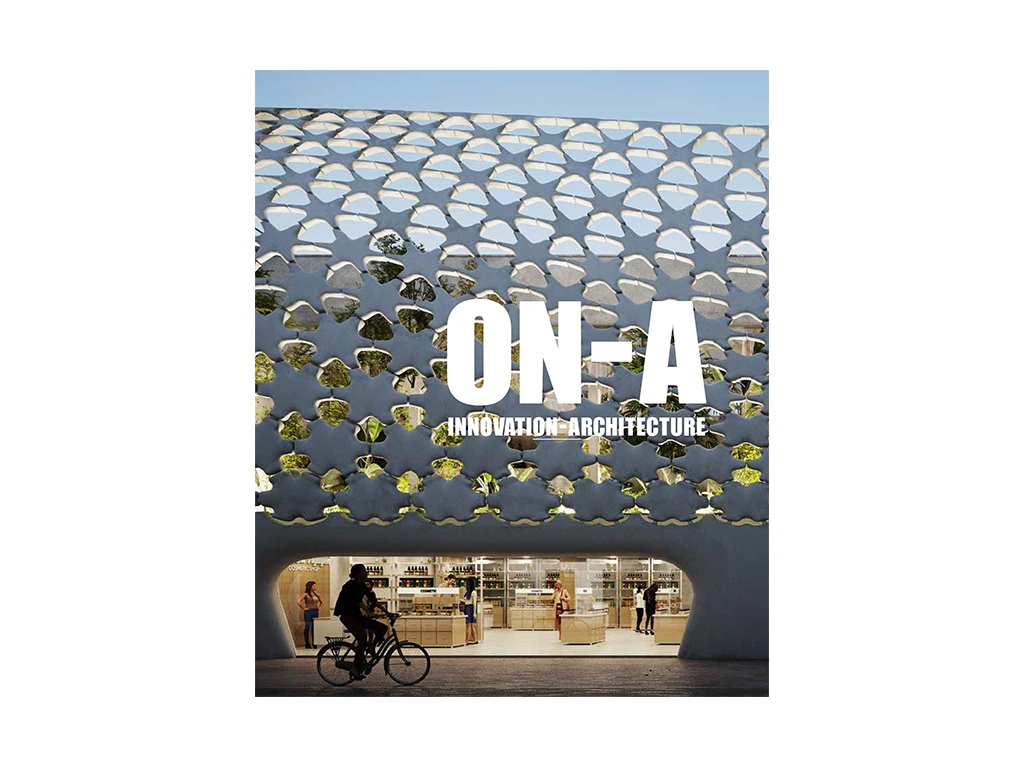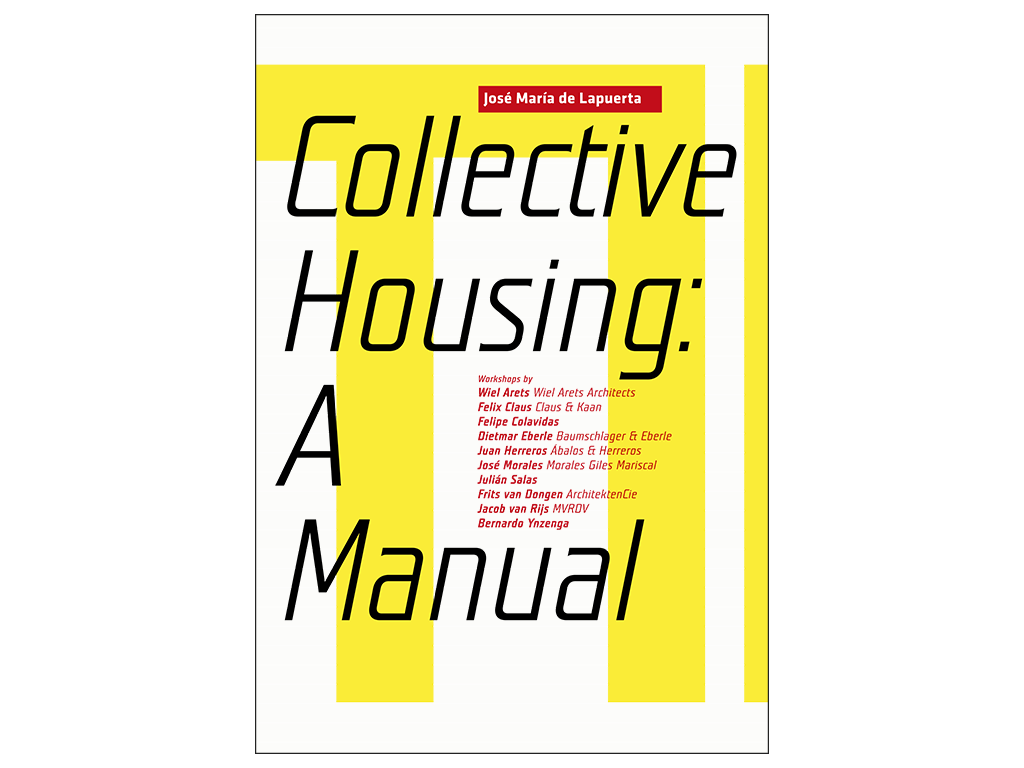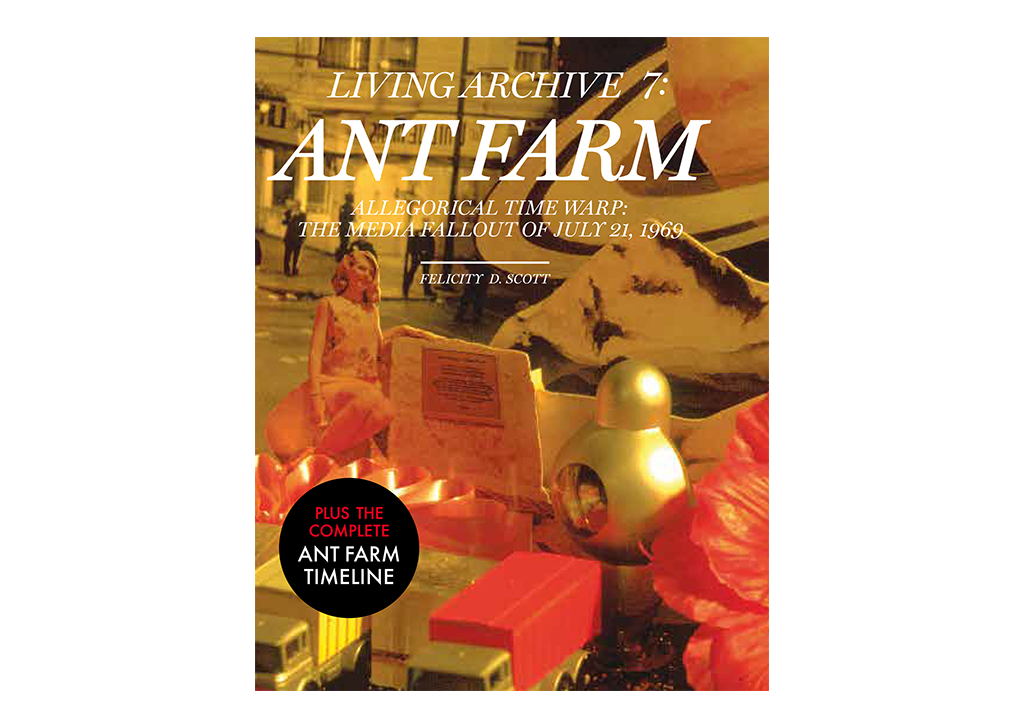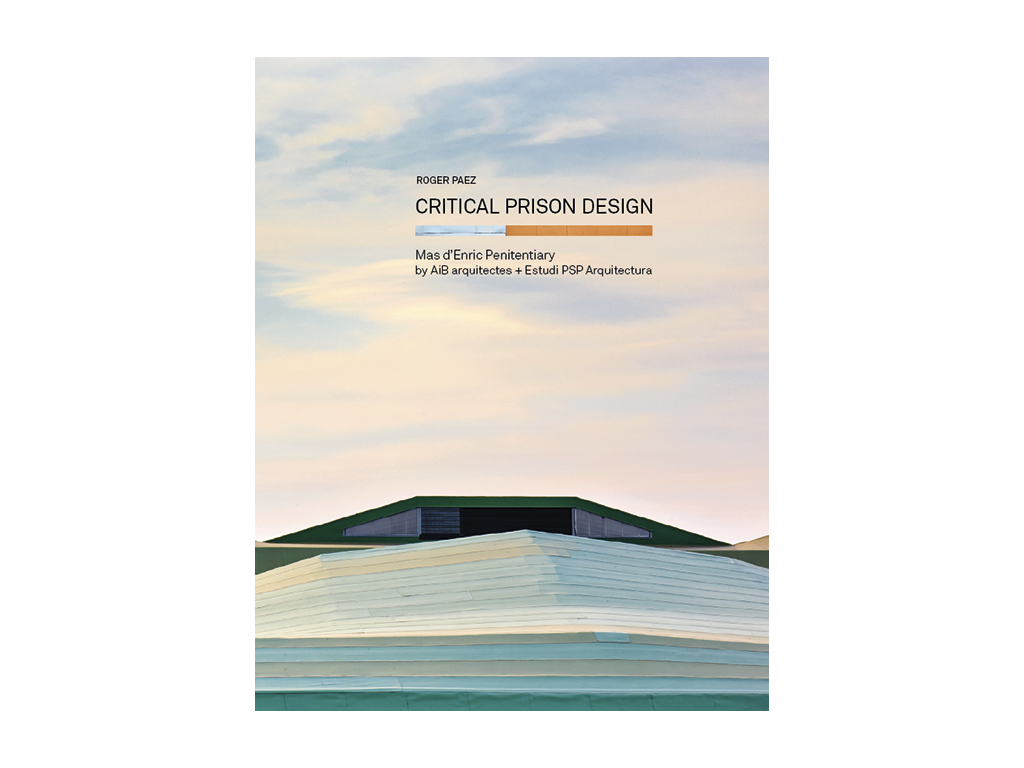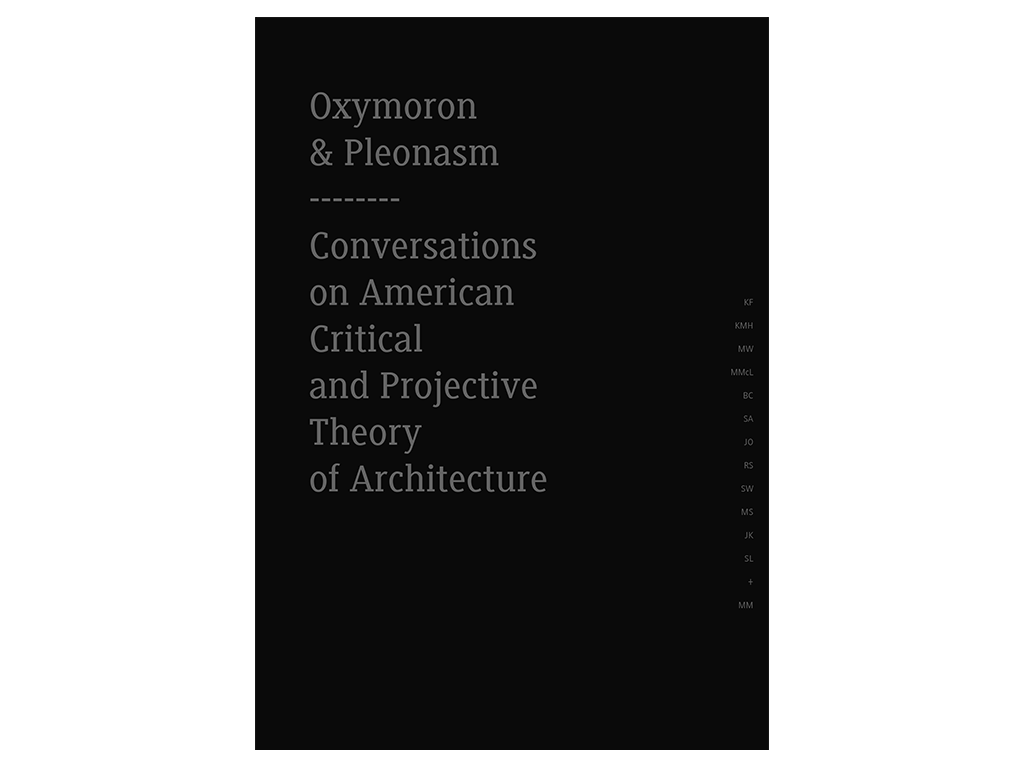Thermal flow of simultaneous movements
The illustrations show the speed at which all the mobile elements cross the intersection over 3 minutes. This synthesis gives a color for each level of speed: the colors go from the coldest (blue) for slow, to the warmest (yellow) for fast. The speed variations are also indicated, as well as the nature of the paths: straight for vehicles and winding for pedestrians.
Tokyo, Sao Paulo, Beijing
In order to get away from the dependence on the “fastest”, it is interesting to observe that, contrary to the increase in speed for long distances, with the high-speed train and the airplane, speeds within cities are decreasing. Saturation and modal diversification are the first explanations. The increase in the role of pedestrians is another. At intersections, the slowdown is obvious for the crossing, but we also observe a very different sharing of space between sites: a lot of space for pedestrians in London, a lot for cars in Sao Paulo. The illustrations show crossings with a majority of slow speeds in Lagos or Hanoi, and others with fast speeds in Sao Paulo, Beijing or Copenhagen. The blue and purple shades tend to represent small mobile elements, while the green and yellow shades represent mostly motor vehicles.
Even though the number of accidents is an important indicator in the study of intersections, we prefer to look at the causes and therefore above all the attitudes of the mobile elements. We thus note a very different position with regard to compliance with the codes: very strong in Denmark and Japan (thick line for motor vehicles) and a more reactive and diffuse attitude in China for example. The differences in speed and rhythm often create accident points. To limit them, in Old Delhi, it is observed that slow movements generally mark micro-stops, allowing one to adjust one’s trajectory and to brush against the crossing mobile element. This type of crossing is clearly avoided in the case of a traffic light intersection, with the mobile elements being kept at a distance thanks to time. The difference in size of the vehicles is policed by the traffic lights. In Hanoi, the varying speed capabilities of the mobile elements could cause an imbalance. This seems to be compensated by a relatively homogeneous, slow and continuous general movement, in order to manage crossing between mobile elements.
Copenhagen, London, Lagos
For pedestrians, several speeds are sometimes observed, as in London: those in a hurry, who cross in two stages outside the time reserved for pedestrians, and those who are slower, who respect the rules. Some slow paths sometimes cross fast-moving areas by taking advantage of very short gaps: temporal, in the flow of traffic, and spatial, between the traffic lanes. Thus, within a strict management of crossings, different attitudes related to speed and patience of users are taken into account.
Finally, the case of China shows vehicles stuck in the middle of the intersection, having to slow down to negotiate the exit. This intersection therefore mixes moderate and fast speeds.
Musical score of stops on the trajectories
Making diagrams of the intersections shows the paths of the mobile elements and the stopped moments for 3 minutes. A short time is represented by a small point, a long time by a large point, whatever the nature of the mobile elements. This makes it possible to distinguish the stops in the movements and the fluidity of the trajectory.
The complexity of the operations provides leads for improvement in situations of saturation and blockage that can be disentangled according to different organizations of time and priorities, across cultures. Movements in Old Delhi encourage different motorized and non-motorized modes. Co-presence is managed with jerky movements, with micro-stops. Hanoi accommodates different modes in the same way, but the movement is much slower and continuous. Mixing is possible. The movement in Lagos has long interruptions as minibuses crowd the street waiting for passengers, and the highways are generally very heavily congested. China has a similar case of saturation due to an abundance of vehicles.
Tokyo, Sao Paulo, Beijing
While movements in Brazil, England, Japan and Denmark are restricted, we find more impositions on “left-turns” in Denmark and Brazil, making them faster than the other two, but more restrictive to freedom of movement. This results in a need to manage speed, but also with the ability to stop, slow down and brake, in the case of a large number of crossings and travel modes.
For traffic light intersections, the trajectories are simpler, with straight lines and often 90° turns. These movements are possible for all vehicles, including trucks and public transport. Certain options are excluded with vehicles that are too large, as they are dangerous, while flexibility is possible with small vehicles. Over-loading of vehicles excludes porous crossings. Short distances and small vehicles, such as mopeds or scooters, are factors that facilitate micro-crossings and thus greater freedom of movement, in co-existence with other vehicles.
Copenhagen, London, Lagos
The frequency and duration of stops on each of the routes give very different impressions at different sites:
– in Hanoi, the atmosphere is fluid, despite the very slow speed,
– In Lagos, the atmosphere is tense and uncertain,
– in Sao Paulo and Copenhagen, the musical scores appear a little strict.
These atmospheres are more or less spread out over the sites, with concentrations of stops at the crossing points in London or a complete spread over the intersection in Lagos.
Chrono-drawing on the variations of movement
Making diagrams of intersections is difficult without activity to show movement, but too much movement in one image makes it difficult to synthesize analytically. The diagrams below, inspired by Eadweard Muybridge’s superimposed photographic images, represent points that are narrowed for slowing down and spaced out for accelerating. This chrono-illustration allows to read simultaneously the visible or felt movement on the intersection, over a time of 3 minutes. All the trajectories are represented to illustrate all the movements specific to the site.
Tokyo, Sao Paulo, Beijing
The drawn representation of the movements of the square, without its constructed framework, makes it possible to read a kind of global graphic signature formed by the ephemeral trajectories. A highly contrasted pattern for each square becomes legible. The regular and precise movements of Sao Paulo or Copenhagen are distinguished from the abundant and sinuous movements of Hanoi or even London. The possibility of moving more freely comes from the maneuverability of the mobile element and the attitude of the user. We bring it closer to the reactive attitude of surfers who advance on a moving ground, but also the acceptance, even the appreciation, of being on a ground in perpetual movement. This ability to improvise is necessary to move in the city. Reactivity can also be allowed and encouraged.
The graphs also show the radical nature of traffic light intersections and flow separation, which spread movements over large areas.
Copenhagen, London, Lagos
The changing context of an intersection requires a dynamic vision of the space. The complexity of the changes requires tactics in relation to recurring movements. These representations give a reading of the variations and make it possible to anticipate, to be ready, to integrate the changes that are recurrent. This also makes it possible to envisage adaptations between modes, as the co-presence of a tramway and pedestrians has long since shown. Taking into account the other mobile element is very obvious in Hanoi.
The resulting pattern of movements appears to be less related to spatial geometry than to the managing of crossings by the mobile elements.
